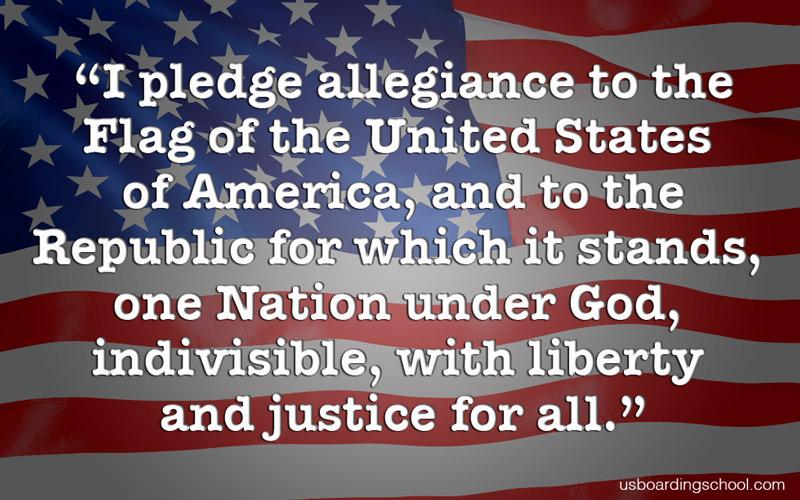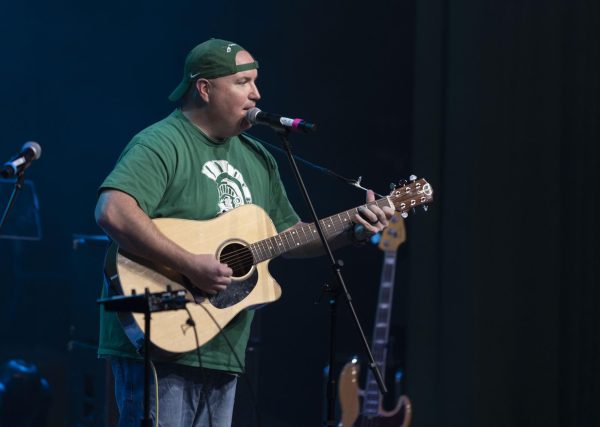To Pledge or Not to Pledge
Is the ‘Pledge of Allegiance’ a valued tradition or a forced routine?
“I pledge allegiance to the flag of the United States of America, and to the republic for which it stands, one nation under God, indivisible, with liberty and justice for all.” Most students here at Kelly Walsh High School have been saying the pledge since kindergarten. However, opinions on how the Pledge should be handled have begun to vary greatly.
According to CNN, Daniel Sharp Ford, the owner of the juvenile magazine “The Youth’s Companion,” was on a mission to put an American flag in every school in the country. Ford’s goal was to create a more unified and patriotic country. As part of his mission, Ford asked Francis J. Bellamy to compose a Pledge of Allegiance to the flag, which was published in the magazine on September 18, 1892.
Today, many schools in the country do not say the pledge everyday. According to the San Francisco Chronicle, schools in the state of California are not even required to teach the Pledge to their students. However, at Kelly Walsh, saying the Pledge of Allegiance is still apart of the daily routine.
Dalton Blase, a senior, said, “I think standing for the pledge is important to honor the one’s who risk their lives everyday just so we can safely live ours. It’s a simple courteous act,” Dalton Blase, a senior, said.
Blase is among the group of people at school that still believes it is imperative to stand for the Pledge everyday.
On the other hand, there are some students at Kelly Walsh high school who don’t believe standing for the pledge is necessary.
“I think it’s a person’s choice whether they want to stand for the pledge or not,” Iesha Mitchell, a senior, said. Mitchell added that she is a Wiccan, which entails that she believes in multiple gods.
Mitchell is aware that different people simply have different beliefs and that it is her First Amendment right to choose not to stand for the Pledge.
“We shouldn’t have to stand up everyday to appreciate America. I respect America and the freedom’s we have, so if it’s one big event, I shall stand up, but if it’s a small event like we do everyday, then I won’t,” said Mitchell.
Teachers and other staff members are the most exposed to the divided population of students.
“I think it’s their First Amendment right to choose not to stand for the pledge. I sometimes wonder if it’s a religious conflict…like a Jehovah Witness cannot stand and salute any flag and it makes no sense for a foreign exchange student to salute a flag that doesn’t belong to them,” Inga McCoy, a KWHS staff member, said.
Furthermore, many people at Kelly Walsh believe that there can be certain measures taken to show respect for the United States of America while still remaining loyal to one’s own beliefs.
“Many Americans that do come from different cultural and religious backgrounds still stand for the pledge, they just don’t say the “under God” part or they say “under gods” to replace it. After all the pledge never originally had the “under God” part in it,” said Blase.
According to the Business Insider, in 1954 – during the mists of the Cold War – President Eisenhower officially added the words “under God” to the Pledge. Eisenhower believed that new addition would add “spiritual weapons which will forever be our country’s most powerful resource.”
Whether they stand for the pledge or not the students and staff members have a reason. Those who stand feel that it is necessary to acknowledge the freedoms they have every day and others feel that it is something they can acknowledge without standing and pledging their allegiance. No matter the choice made, the flag represents the power given to us by America to choose our actions.







